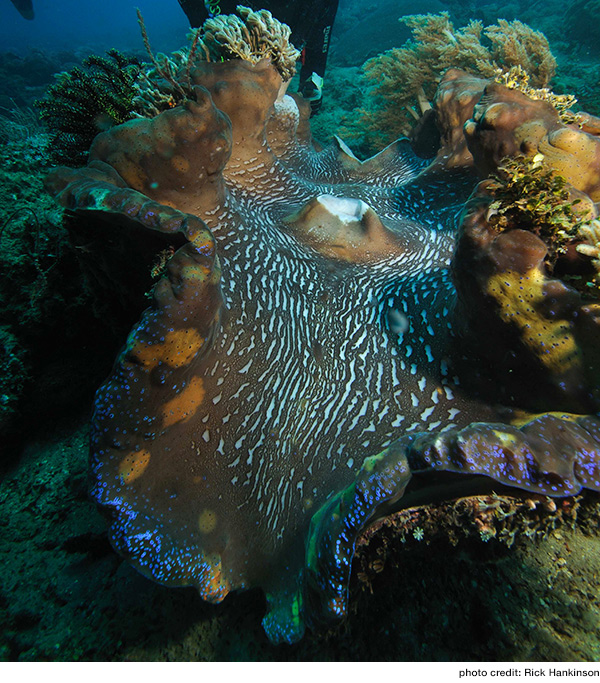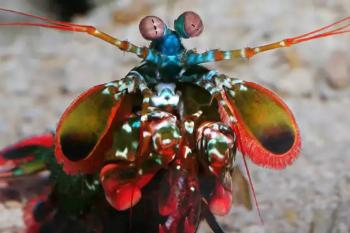Giant Clams are in a Giant Jam!
Why Protecting Giant Clams is GIANT!

Giant clams are the largest bivalves on earth, as well as the largest in the fossil record. They are indeed giants: they can grow to four feet wide and weigh as much as 500 pounds. It’s the clam’s colorful mantle, often an iridescent blue, that’s easy to spot. The clams create that blue color to direct sunlight to the tiny algae – called zooxanthellae – that live within. Just as with corals, the algae produce nutrients for the clams. They also feed on plankton drifting by. Giant clams live on shallow coral reefs in the South Pacific and Indian oceans.
Unfortunately for the all the giant clam species, their meat is considered a delicacy in many places in Asia, and so some populations have disappeared while others are officially listed as Endangered or Vulnerable. Local island people who depend on the clams for food can’t find any. In a sad twist in today’s conservation challenges, the anti-poaching effects on the supply of elephant ivory has led to Chinese boats destroying coral reefs to harvest giant clams. There is a new market for their shells to replace elephant ivory for carving.
In some areas, aquaculture has been successful in providing an alternative supply of clams for the meat and for release into the wild.
More about giant clams:
From the Monterey Bay Aquarium: Giant Clam
Giant Clam from National Geographic
Video of giant clams:
Giant Clam from The Reef Reality
Photos of giant clams:
Giant Clams of the Great Barrier Reef
Photo credit: By Rick Hankinson [CC BY-SA 3.0 (http://creativecommons.org/licenses/by-sa/3.0)], via Wikimedia Commons
















